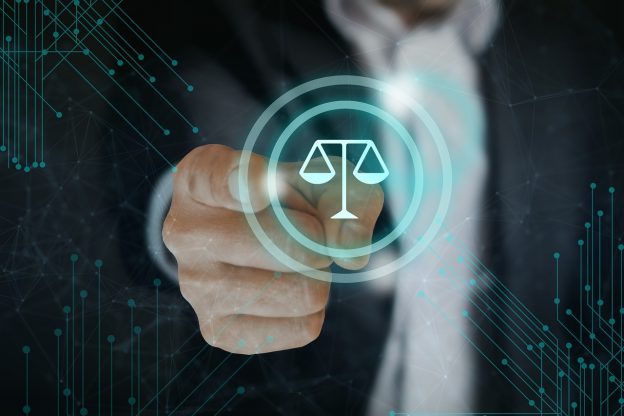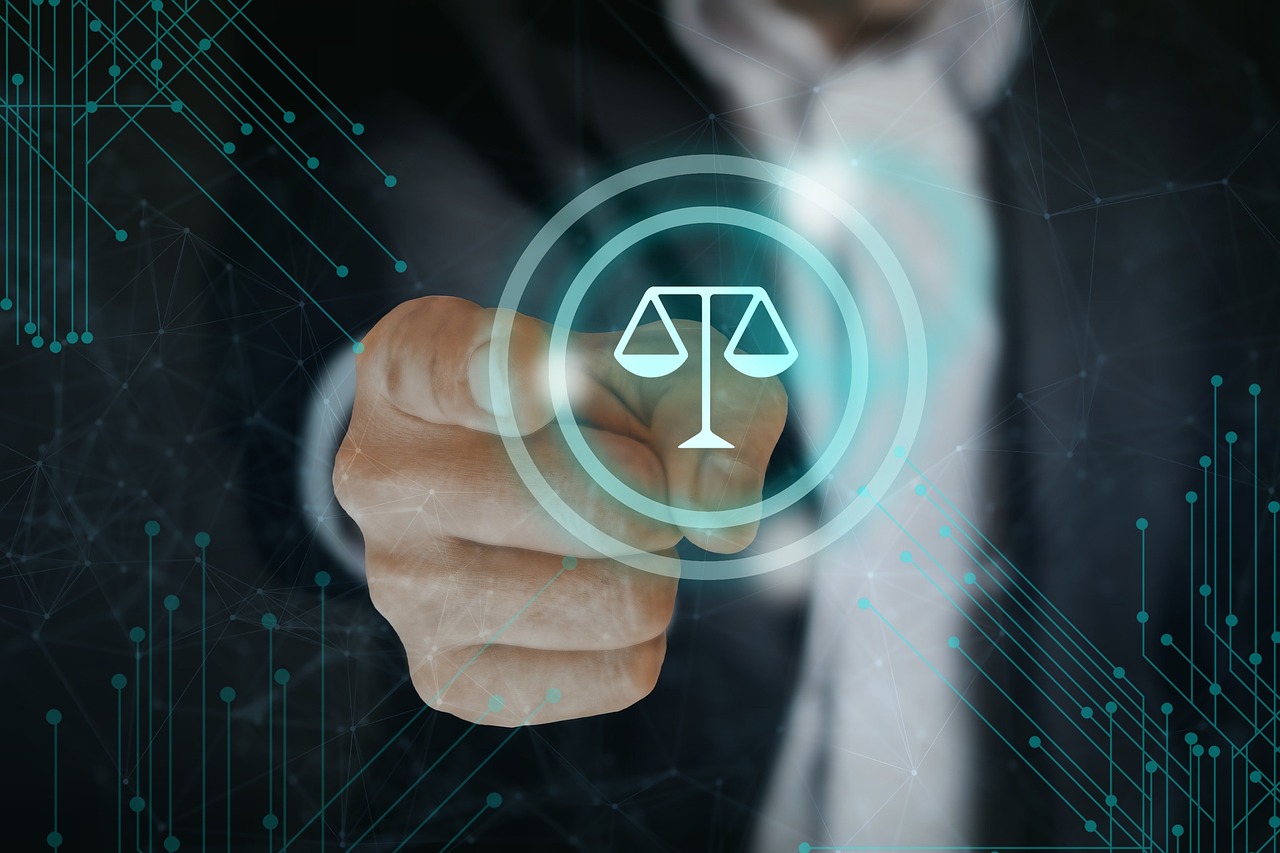Divorce can be a challenging and emotional experience for anyone involved, but when it comes to co-parenting teenagers, the difficulties can be even more complex. In this article, we will explore the unique challenges faced by parents navigating the world of divorce while also trying to co-parent their teenage children. From managing communication and parenting styles to addressing legal concerns and finding solutions, we will provide guidance and reassurance to those going through this difficult time. So, if you’re facing the complexities of divorce and co-parenting teenagers, read on to discover ways to navigate these challenges and find solutions that work for you and your family.
Understanding the Challenges of Co-Parenting Teens during Divorce
Going through a divorce is undoubtedly a challenging time for everyone involved, but it can be particularly difficult for teenagers. Teens are already grappling with their own personal identity development, and the added stress and emotional upheaval of divorce can significantly impact their well-being. As a co-parent, it’s important for you to understand the unique challenges that your teenager may face so that you can provide the necessary support and guidance during this transition.
The Impact of Divorce on Teens
Divorce can have a profound impact on teenagers as they navigate their way through adolescence. The breakup of their parents’ marriage can cause feelings of grief, anger, confusion, and insecurity. Teens may struggle with a sense of loss and a fear of abandonment, leading to negative emotions and behavioral changes. They may also experience difficulties in school, relationships, and overall emotional well-being.
Communication Barriers between Teens and Divorced Parents
One of the most common challenges in co-parenting teens is the breakdown of communication between divorced parents and their teenagers. Teenagers may feel caught in the middle of their parents’ conflicts and may find it difficult to express their feelings openly. They may become withdrawn, distant, or even rebellious, making effective communication a daunting task.
Conflicting Parenting Styles
Co-parenting with a different set of rules and expectations can be confusing for teens. Divorced parents often have differing parenting styles, which can lead to inconsistencies and conflicts. One parent may be more lenient, while the other may be more strict. These conflicting parenting styles can create a sense of instability for teenagers, making it harder for them to adjust and thrive.
Dealing with Emotional Upheaval in Teens
Emotional upheaval is a common response to divorce for teenagers. They may experience a range of emotions such as sadness, anger, guilt, and anxiety. It’s important for co-parents to acknowledge and validate these feelings, providing a safe space for their teen to express themselves. Helping your teenager navigate their emotions and providing them with the necessary support and guidance is crucial for their well-being.
Building a Supportive Co-Parenting Dynamic for Teens
Building a supportive co-parenting dynamic is essential for your teenager’s well-being and adjustment to the new family structure. It requires a commitment from both parents to work together in providing consistency, open communication, and respect for the autonomy and individuality of your teenager.
Establishing Consistent Rules and Expectations
Consistency is key when co-parenting teenagers. It’s important for both parents to establish consistent rules and expectations for their teenager, regardless of the specific parenting style. Consistency helps provide stability and structure for your teenager, allowing them to navigate their daily life with confidence and a clear understanding of boundaries.
Working on Effective Communication
Improving communication with your teenager and your co-parent is crucial for co-parenting success. It’s important to create an open and safe environment where your teenager feels comfortable expressing themselves. Regular communication between co-parents can help ensure that both parents are on the same page regarding important decisions and can address any conflicts or concerns.
Respecting Teen’s Autonomy and Individuality
Teenagers are at a stage in their life where they are striving for autonomy and independence. As co-parents, it’s important to respect their individuality and allow them to have a say in decisions that directly affect their lives. Encourage your teenager to express their opinions and preferences, and involve them in the decision-making process whenever possible.
Encouraging Open Dialogue and Active Listening
Encouraging open dialogue and active listening is essential for fostering healthy communication and understanding between co-parents and teenagers. Create opportunities for family discussions where everyone’s opinions and concerns are heard. Practice active listening by providing your full attention, empathizing with your teenager’s perspective, and validating their feelings.
Navigating Teen’s Emotional and Mental Well-being
Teenagers often experience emotional distress during and after a divorce. As co-parents, it’s important to prioritize your teenager’s emotional and mental well-being and provide them with the necessary support and guidance.
Recognizing Signs of Emotional Distress in Teens
It’s important to be vigilant and recognize signs of emotional distress in your teenager. These signs may include changes in behavior, such as withdrawal from family and friends, worsening academic performance, mood swings, or increased irritability. Physical symptoms such as changes in appetite or sleep patterns can also indicate emotional distress.
Providing Emotional Support and Guidance
Be a source of emotional support for your teenager during this challenging time. Reassure them that their feelings are valid and that you are there to listen and understand. Encourage them to express their emotions in healthy ways and provide them with guidance on coping strategies, such as journaling or engaging in hobbies and activities they enjoy.
Involving Therapeutic Professionals, if Needed
If your teenager is experiencing significant emotional distress, it may be beneficial to involve therapeutic professionals such as counselors or therapists. These professionals can provide your teenager with the necessary tools and support to navigate their emotional challenges effectively. Discuss this option with your co-parent and explore potential therapy options that align with your teenager’s needs.
Cultivating a Positive and Nurturing Environment for Teens
Creating a positive and nurturing environment at home is essential for your teenager’s emotional well-being. Foster a sense of love, support, and acceptance within your co-parenting relationship. Encourage healthy family dynamics and provide opportunities for quality time and bonding. Ensure that your teenager feels safe and valued in their home environment.
Co-Parenting Strategies for Successful Transitioning
Successful transitioning during divorce requires co-parents to work together in creating a stable and consistent environment for their teenager. Implementing co-parenting strategies can help minimize conflict and ensure a smooth transition for your teenager’s well-being.
Creating a Co-Parenting Plan
Developing a co-parenting plan is vital for effective co-parenting of teenagers. This plan should outline details regarding custody and visitation schedules, rules and expectations, decision-making processes, and methods of communication between co-parents. Collaborate with your co-parent to create a plan that prioritizes your teenager’s needs and allows for flexibility as they grow and change.
Developing Consistency and Flexibility
Consistency and flexibility go hand in hand when co-parenting teenagers. Establish consistent rules and expectations that both parents can adhere to, while also recognizing the need for flexibility in certain situations. Flexibility allows for adjustments that accommodate your teenager’s changing needs and schedules, while consistency provides the stability they require.
Coordinating Parenting and School Responsibilities
Coordinating parenting and school responsibilities is crucial for your teenager’s academic success and overall well-being. Co-parents should communicate regularly regarding school-related matters, such as homework, extracurricular activities, and parent-teacher conferences. Collaborate on decision-making regarding educational choices and ensure that both parents are actively involved in supporting your teenager’s academic progress.
Handling Difficult Teen Behaviors
Teenagers may exhibit difficult behaviors as they navigate the challenges of divorce. It’s important for co-parents to approach these behaviors with empathy, understanding, and a united front. Communicate openly about concerns and potential strategies for addressing difficult behaviors, and work together to implement consistent approaches that promote growth and positive change.
Legal Considerations in Co-Parenting Teens
Navigating the legal aspects of co-parenting can be complex, but understanding the legal considerations is essential for ensuring your teenager’s best interests are met.
Understanding Custody and Visitation Rights
When co-parenting teenagers, it’s important to have a clear understanding of custody and visitation rights. Familiarize yourself with the legal terminology and guidelines specific to your jurisdiction. Establish a custody and visitation schedule that works for both parents and prioritizes your teenager’s well-being.
Modifying Parenting Agreements as Teens’ Needs Change
As your teen grows and their needs evolve, it may become necessary to modify parenting agreements. Stay open to communication with your co-parent and be willing to adapt the parenting plan as necessary. Consulting with a family law attorney can provide guidance on the legal process of modifying parenting agreements and ensure that any changes align with your teenager’s best interests.
Dealing with Disagreements and Conflict Resolution
Disagreements and conflicts are inevitable in co-parenting situations. It’s important to approach these situations with a focus on finding resolutions that prioritize your teenager’s well-being. Consider involving a mediator or seeking professional guidance to help navigate disagreements and ensure productive communication between co-parents.
Addressing Legal Concerns in Teen’s Best Interest
Always prioritize your teenager’s best interests when addressing legal concerns. This may involve making difficult decisions or sacrificing personal desires for the sake of their well-being. Consult with your co-parent and legal professionals to ensure that your actions align with legal guidelines and promote your teenager’s overall welfare.
Supporting Teens during Transitions and Milestones
Transitions and milestones play a significant role in a teenager’s life. It’s important for co-parents to provide support and encouragement during these pivotal moments.
Coordinating Teen’s Education and Extracurricular Activities
Coordinating your teenager’s education and extracurricular activities is essential for their growth and development. Stay involved in their academic progress, attend school events together as co-parents, and encourage their interests and passions outside of school. Collaboration and open communication between co-parents can ensure that your teenager receives the necessary support for their educational and extracurricular pursuits.
Celebrating Important Milestones as a Co-Parent
Marking important milestones as a co-parent can help create a sense of unity and stability for your teenager. Collaborate with your co-parent to celebrate graduations, birthdays, and other significant events in your teenager’s life. By putting your differences aside and coming together to commemorate these milestones, you show your teenager that they are loved and supported by both parents.
Supporting Teen’s Independence and Decision-Making
Teenagers crave independence and the opportunity to make their own decisions. As co-parents, it’s important to support your teenager’s growing autonomy and decision-making abilities. Encourage them to take on responsibilities and make choices aligned with their values and goals. Offer guidance and support as they navigate these decisions, helping them build their confidence and sense of self.
Coping with Teen’s Relationships and Social Life
Social relationships are paramount to teenagers, and it’s essential for co-parents to support their teenager’s social life. Encourage and facilitate opportunities for your teenager to maintain friendships and engage in healthy relationships. Be supportive and respectful of their choices while also setting appropriate boundaries to ensure their safety and well-being.
Dealing with Divorce-Related Challenges in School
Divorce-related challenges can have a significant impact on your teenager’s school life. Co-parents can work together to address these challenges and provide the necessary support to help their teenager succeed academically and emotionally.
Communicating with School Staff and Teachers
Open communication between co-parents and school staff is crucial for addressing divorce-related challenges in school. Keep your teenager’s school informed about the changes in your family structure and any additional support they may require. Collaborate with teachers, counselors, and administrators to ensure that your teenager’s academic needs are met and that they receive the necessary emotional support during this transition.
Minimizing Disruptions to Teen’s Academic Progress
Minimizing disruptions to your teenager’s academic progress is important for their overall well-being. Establish a routine and structure that supports their schoolwork and provides consistency. Cooperate with your co-parent to ensure that school-related responsibilities are shared and that there are clear expectations regarding homework, school projects, and deadlines.
Managing Teen’s Stress and Anxiety in School
Divorce can cause stress and anxiety for teenagers, which can have a detrimental impact on their school performance and overall mental well-being. Co-parents should work together to address their teenager’s stress and anxiety, providing emotional support and teaching healthy coping mechanisms. Encourage open communication with your teenager and school professionals, such as counselors, who can provide additional support.
Exploring Counseling and Peer Support Options
Counseling and peer support options can be beneficial for your teenager’s emotional well-being during and after divorce. Encourage your teenager to explore counseling services offered at school or seek outside counseling if needed. Peer support groups and extracurricular activities can also provide your teenager with a sense of belonging and emotional support as they navigate the challenges of divorce.
Reassuring Teens and Preventing Parental Alienation
Reassuring your teenager and preventing parental alienation are essential for maintaining healthy parent-child relationships and supporting their emotional well-being.
Promoting Healthy Parent-Child Relationships
Promoting healthy parent-child relationships is crucial for your teenager’s well-being. Encourage quality time with both co-parents and foster positive interactions. Demonstrate respect and support for your co-parent in front of your teenager, promoting a sense of unity and stability. By prioritizing their well-being over personal conflicts, you help reassure your teenager of their importance and love from both parents.
Avoiding Negative Talk or Criticism towards Other Parent
It’s important to avoid negative talk or criticism towards your co-parent in front of your teenager. Negative comments or criticism can cause emotional distress and create a divided loyalty for your teenager. Focus on maintaining a positive and respectful attitude when discussing your co-parent and encourage your teenager to have a healthy and positive relationship with both parents.
Encouraging Teens to Maintain Relationships with Both Parents
Encourage your teenager to maintain relationships with both co-parents. Emphasize the importance of having a healthy and supportive bond with both parents, as it contributes to their emotional well-being and overall development. Facilitate opportunities for your teenager to spend time with their co-parent and engage in meaningful activities together.
Addressing Signs of Parental Alienation and Seeking Intervention
Addressing signs of parental alienation is crucial for maintaining a healthy parent-child relationship. If you notice signs of parental alienation, such as your teenager rejecting or acting out against one co-parent, it’s important to seek intervention. Consult with a family law attorney to understand your legal options and consider involving a family therapist who can help address and resolve parental alienation concerns.
Balancing Personal and Co-Parenting Responsibilities
Co-parenting can be emotionally and physically demanding, making it important to prioritize self-care and maintain a positive co-parenting mindset.
Self-Care for Co-Parents during Challenging Times
Taking care of yourself is essential for maintaining your own well-being and being an effective co-parent. Prioritize self-care activities that rejuvenate and recharge you, such as exercise, hobbies, spending time with friends, or seeking professional support when needed. By prioritizing your own needs, you can better support your teenager during the challenges of divorce.
Setting Boundaries and Allocating Me-Time
Setting boundaries and allocating time for yourself is crucial for maintaining balance in your personal and co-parenting responsibilities. Establish clear boundaries with your co-parent regarding personal time and communicate your needs openly. Taking time for yourself allows you to recharge and be more present and engaged when interacting with your teenager.
Seeking Support from Friends, Family, and Professionals
Seeking support from friends, family, and professionals can provide invaluable assistance during the co-parenting journey. Lean on your support system for emotional support and guidance. Consider participating in support groups for co-parents or seeking professional counseling to help navigate the challenges of co-parenting. Remember, you don’t have to go through this alone.
Maintaining a Positive Co-Parenting Mindset
Maintaining a positive co-parenting mindset is vital for the well-being of your teenager. Focus on the positive aspects of co-parenting, such as the love and support you can provide for your teenager together. Let go of resentment or negative emotions towards your co-parent and prioritize your teenager’s best interests. By maintaining a positive mindset, you create a supportive environment for your teenager to thrive.
Frequently Asked Questions (FAQs)
How can divorce impact the behavior of teenagers?
Divorce can impact teenagers’ behavior in various ways. They may experience intense emotions such as sadness, anger, or guilt, leading to changes in behavior, academic performance, or relationships. Some teenagers may become withdrawn or rebellious, while others may seek attention or engage in risk-taking behaviors. It’s important to provide emotional support and guidance during this challenging time.
What can I do if my co-parenting style differs from the other parent?
If you have differing co-parenting styles, open and honest communication is key. Share your concerns and perspectives with your co-parent, and listen to their point of view as well. Find common ground and make compromises when necessary for the well-being of your teenager. Consider seeking the assistance of a family therapist or mediator if you need help navigating these differences.
Can I modify the custody and visitation arrangements as my teen grows?
Yes, as your teenager grows and their needs change, it may be necessary to modify the custody and visitation arrangements. Consult with a family law attorney to understand the legal process and requirements for modifying parenting agreements. The court will consider the best interests of the teenager when determining any modifications.
How can I help my teenager cope with the emotional challenges of divorce?
Helping your teenager cope with the emotional challenges of divorce requires open communication, emotional support, and reassurance. Create a safe and supportive environment where they feel comfortable expressing their emotions. Encourage healthy coping mechanisms, such as journaling, engaging in hobbies, and seeking support from trusted friends or professionals. Be patient and understanding as they navigate their emotions, and remind them that they are loved and supported.







































